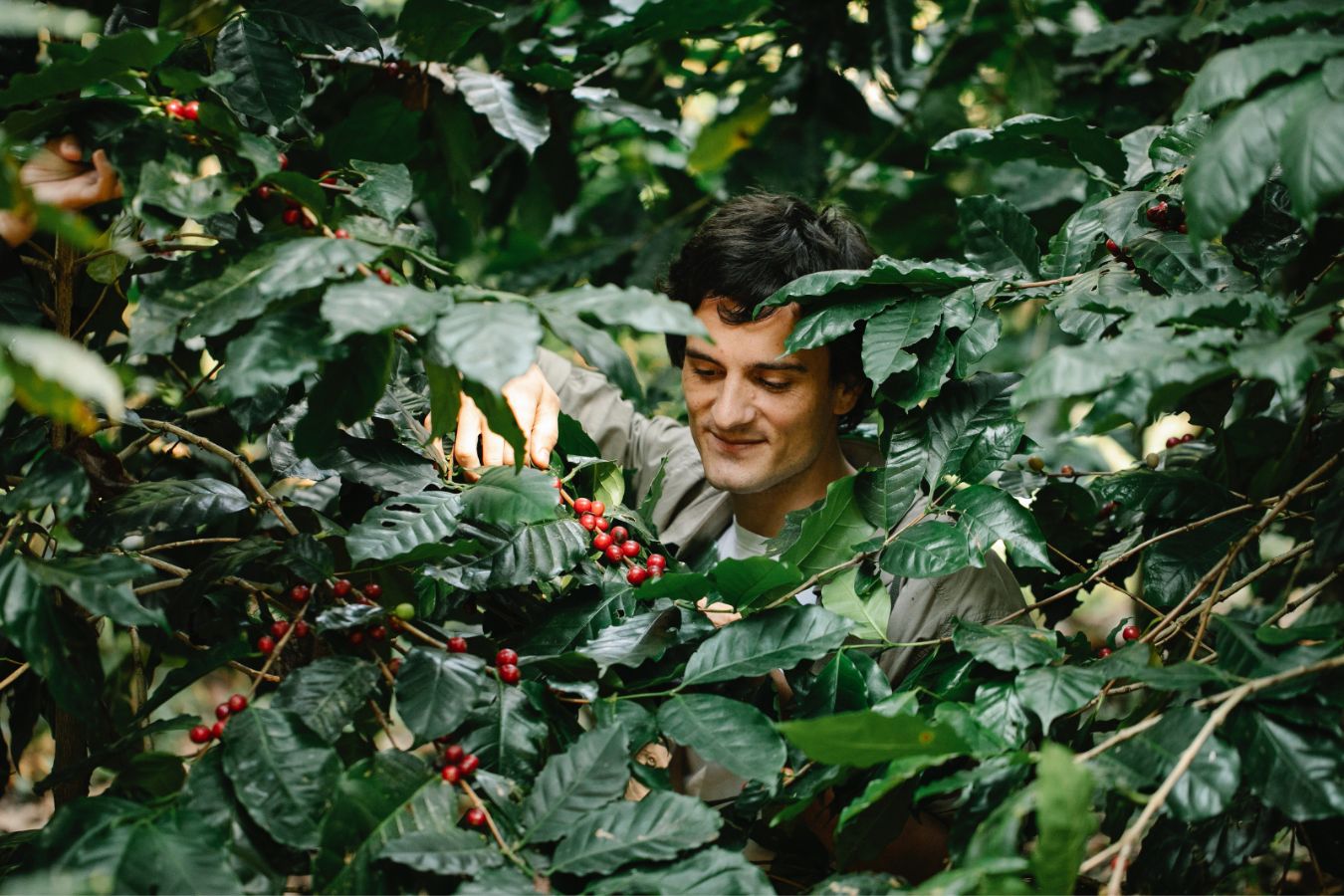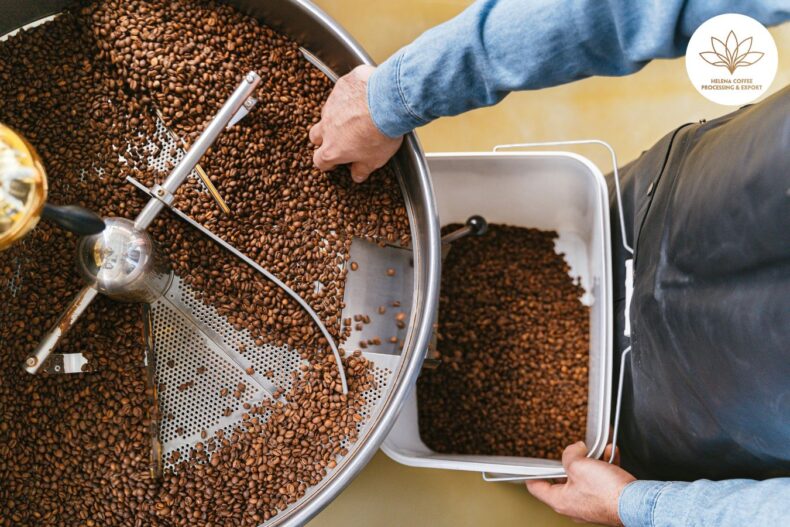
Coffee Growers: They Don’t Laugh That Much!: Let’s do a simple experiment before reading this article. Try to Google the image and search for the word “Coffee Farmer” to see what happens.
Unexpectedly, in just 0.67 seconds, 136 million results appeared. And 99% of those images are the bright smile of the farmer next to his coffee garden.
But the truth is:
They Don’t Laugh That Much!
Coffee farmers are extremely hard. But sadly, few people know about their struggles in making coffee beans.
Images are still images. As I used to think when I was a kid, being a farmer must be fun, you guys can go to the fields to play every day. However, later growing up a bit, especially when I started in the coffee industry, I also started to have a different view. And I will try to help you understand the feelings behind the farmer’s smile through this article.
From nature, when climate change causes storms, floods, water shortages… From the plants themselves when dealing with diseases and pests… ruin…
But besides that, in today’s high-quality coffee production industry, there are still “tears” that few people know about. Specifically, in two stages: Harvesting Ripe Coffee and Preliminary Processing of Coffee.

Harvesting Ripe Coffee Beans Us
Vietnamese coffee growers did not do this before. They will usually use the following two ways to harvest coffee. The first way is to spread a tarp under the tree, then shake it vigorously to let the fruit fall. The second way is to use your hands to pluck the coffee berries like plucking vegetables. Both of these methods produce the same result:
The batch of finished coffee mixes green and ripe fruits with different branches, leaves, pebbles, etc. This means the coffee will be cheap and used mainly in instant coffee or to extract caffeine for energy drinks. These batches of “poor quality” coffee are referred to by the rather casual name: “Commercial Coffee.”
However, in recent years, coffee farmers have had to change how they harvest to meet the requirements of high-quality coffee. Coffee bags must now reach 100% ripeness and not mix too much foreign matter. This is the first and foremost factor in scoring good quality coffee.
Therefore, farmers had to switch to selective picking to meet the above requirements. Only ripe coffee cherries with the most sugar are picked. And all that process has to be done manually. The farmer must select carefully, peel off the ripe fruit individually, and put them in the basket until all the trees are gone. But the coffee tree is not tiny; it must be as big as an orange or tangerine tree, and the fruit grows like a strawberry.

Imagine, amid the hot, sunny weather, if you were a farmer and had to pick each coffee berry like that, would you be able to smile in front of the camera?
“Then why not rent a machine to work quickly, less tired.”
Surely someone will ask that. But you know what? It’s almost impossible to get these machines up to high-quality coffee plantation producers. Because these coffee farms are primarily located in high mountainous areas, the use of machinery will significantly affect the coffee tree.
Their extended arms can “beat” and crush the branches and leaves of trees during the picking process, and even the green coffee berries are picked without a chance to ripen again.
So most of these machines are only used in commercial coffee harvesting. Most of the world’s high-quality coffee growers still use manual harvesting in the middle of the 21st century.
“Already! After completing this stage, the farmer can start to rest and smile, right?”
The same person asked. But it’s too early; it’s not over yet. This “fun” with fatigue is now vital best.
Information Pre-Processing Coffee

Pre-processing coffee is no different from processing fish after catching it. It must be appropriately handled after being seen to be fresh and delicious. Coffee is the same; it must be processed as soon as possible to ensure quality after being picked. The preliminary processing will determine the flavor of the coffee later.
The farmer, after harvesting the coffee, will have two options:
- One is to continue carrying out the preliminary coffee processing by yourself.
- The second is to deliver coffee to factories that have a team of experienced coffee processing technicians.
However, this article will only focus on the first option because it will let everyone know the feelings of the farmers in this complicated preliminary process of coffee processing.
Coffee is processed by farmers in many ways, not just spreading the coffee berries in the yard and drying them like rice that people often see. Each type of preliminary processing can bring a different coffee flavor. But in general, all preliminaries are not simple at all.
Those are the fainting spells of farmers in greenhouses drying coffee. The sweltering heat and high humidity made weak people quickly collapse from dizziness.
The farmer’s sleepless nights because of the whole body pain, when he had to stir the coffee continuously during the day for the coffee to dry evenly and not be moldy.
And those are the white nights of sitting and studying while translating English documents on how to prepare (Fortunately, coffee is never lacking).
I can’t help but laugh thinking about it. The smile only returned to the farmer when the preliminary processing was completed when the coffee bags were carefully packed and loaded onto the truck.
A rare but brilliant smile. Because they know the great growing coffee flavors they worked so hard for are about to reach you.
Hopefully, after this article, each of us coffee lovers can understand more about the hardships of coffee farming. And don’t forget them in every cup of coffee you drink producer.
To be more practical, to be able to help coffee farmers, you can immediately do a few things:
- Use and drink high-quality coffee of clear origin. These can be mentioned as “Specialty Coffee” with complete information about where to grow and grower. With the money you spend on those bags, much of the coffee may go to the farmer more directly than other floating coffees.
- Cherish every coffee you drink. Each flavor in a cup of coffee is how many cups of sweat and boiling tears.
- Share with everyone about the fundamental role of farmers in creating coffee beans.
- Finally, come down to the coffee farm to talk and share with the farmers.


